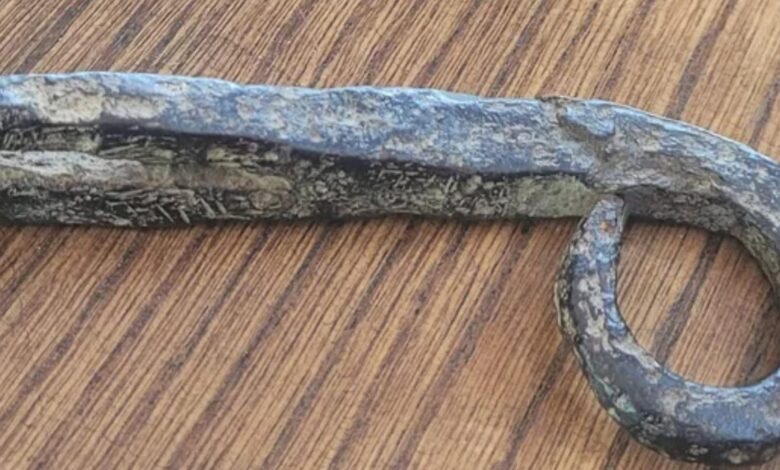
The 7-Inch Iron Mystery That’s Confused Family for Over a Century
This Strange Old Tool Has Been in One Family for Generations
A curious antique iron tool common to Appalachia has rested on a fireplace mantle in North Carolina for as long as anyone in the family can remember. Roughly 7 inches long and likely made of iron, it resembles something forged in an old blacksmith’s workshop. One end features two worn, pointed prongs, while the other curls into a hook-like loop—simple but rugged.
According to the current owner’s father, it originally belonged to his grandmother, who lived past 100 and passed away in the early 1980s. Even in her younger years, she said the tool was already old. Although she never knew its intended purpose, she used it all the time to dig potatoes out of the ground. Clearly, that made it valuable enough to keep.
So What Is This Thing?
After posting a photo online, the family quickly discovered they weren’t alone in wondering. Others had seen tools like it, and no one seemed to agree on a single use. That makes sense—especially in the Appalachian region, where tools were often homemade and used for whatever needed doing.
Many shared guesses, and honestly, all seemed plausible:
- It could have been used for digging potatoes (as great-grandma did).
- Some said it might have pulled nails from old wood or fencing.
- Others believed the looped end was for tightening barbed wire.
- A few thought it worked as a hook for lanterns or tools.
- It might’ve even helped with weeding in tight garden spots.
- One common idea: it served as a small pry tool for various tasks.
Most likely, a local blacksmith made this antique iron tool from Appalachia using scrap metal—nothing unusual in those days. Back then, tools didn’t come in sets. Instead, people had one durable piece that did the job of many.

A Tool That Simply Worked
And that’s part of its charm. This peculiar iron tool, likely antique, originates from Appalachia and didn’t need a manual or a label. It had purpose because someone put it to use. Whether it was on the farm, fixing fences, or just poking around in the dirt, it earned its keep.
Today, it’s no longer used, but it still matters. Now it stands as a quiet reminder of how people once lived—solving problems with what they had, making tools last, and skipping the plastic and packaging. There were no Amazon reviews. Just intuition, grit, and creativity.
Even if no one ever finds out what the tool was “meant” for, its story lives on. And if someone ever took this antique tool off the mantel and put it back to work, it would probably still hold up just fine.




